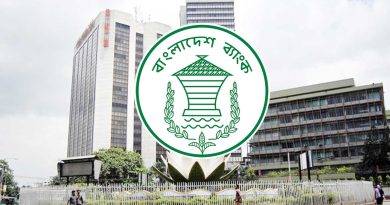Private sector credit growth in Bangladesh slipped below the 7% mark in May 2025, highlighting persistent turbulence in both the political arena and the banking sector. According to Bangladesh Bank’s latest data, credit expansion reached just 6.95%—well short of the central bank’s 9.8% target and the lowest monthly growth in over two decades.
A Gradual Decline
The downward trend in credit growth follows April’s 7.50% and February’s 6.82%, marking the weakest momentum in 21 years. Sector insiders attribute the slowdown to political volatility triggered by the fall of the Awami League government in August 2024 and subsequent law-and-order instability under the interim administration.
Bankers Weigh In
Sheikh Mohammad Maroof, Managing Director of Dhaka Bank, said, “No entrepreneur invests in uncertainty. Political unrest and poor governance are holding back credit expansion.”
He also flagged a deepening liquidity crisis, with around 25% of all loans classified as non-performing.
The central bank’s quarterly review echoed these concerns, pointing to a growing volume of bad loans, weak capital positions, and subdued disbursements—all of which are weighing heavily on the sector’s lending capability.
Distress Signals: NPLs & Liquidity Crunch
- As of March 2025, non-performing loans (NPLs) stood at a record Tk 4.2 lakh crore, nearly one-fourth of all outstanding loans.
- Successive months show a decline in credit growth: from 10.13% in July 2024 down to just 6.95% in May 2025.

Mutual Trust Bank’s MD & CEO, Syed Mahbubur Rahman, underscored the impact of diminished loan demand and the crowding out of private credit due to aggressive government borrowing.
Sluggish Investment and Trade Trends
Though overall imports posted modest gains—with LC openings and settlements rising by 2.98% and 6.08%, respectively—the import of capital machinery plummeted by 27.46% and 25.56%, signaling a slowdown in productive investment.
Abdul Awal Mintoo, former FBCCI president, added that rising inflation is eating into public savings, exacerbating liquidity pressures and suppressing production across industries.
Looking Ahead: Flickers of Hope
Despite the bleak indicators, some optimism remains. Bank officials cited improved trade flows, a new fiscal budget, and gradually stabilizing law-and-order conditions as potential catalysts for renewed credit momentum in the months ahead.
However, as CPD Executive Director Dr. Fahmida Khatun cautioned, “The spike in defaults is squeezing bank liquidity and could severely limit credit for business expansion and employment generation.”
The bottom line: Unless political stability is restored and systemic risks in banking are addressed, Bangladesh’s private sector credit outlook may remain subdued well into FY26.






